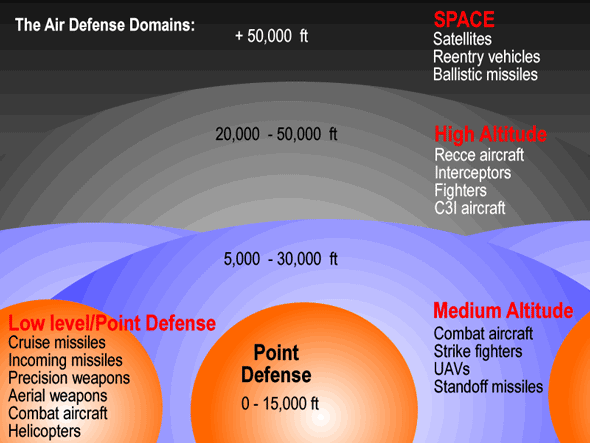Start < Page 1 of 4 >
The devastating effect of modern airpower was demonstrated repeatedly in recent conflicts – in the continued confrontation in Iraq, from 1991 through 2003, the successful application of allied airpower brought some analysts to argue that airpower alone could win a war. However, military planners are less enthusiastic about the airpower’s “silver bullet” and see its best application as part of a joint operation, extensively networked with combat formations on land, at sea and in space. For armies other than the US, the air warfare demonstrated in the two recent conflicts with Iraq was somewhat of a peek into the distant future – and not a realistic scenario they can “copy and paste” into their operational planning. The coalition forces had several unique advantages – political and technological – on their side. These included the decade long ability to pound the Iraqi air defenses, by offensive patrols operated over the “no flying zones”, the use of stealth weaponry, including strike aircraft and cruise missiles, during the initial phase of the conflict and virtually unlimited access to intelligence information, provided by platforms operating beyond the reach of conventional defenses – including spy satellites of various types and high flying UAVs like Global Hawk UAVs. A more restricted use of the same assets, during the Kosovo conflict, was executed under strict operational and political limitations and yielded less dramatic results.
In 100 years of operation, harnessing leading edge technologies and advanced science, airpower has matured and became efficient, precise and devastating. Most evidently since the end of the cold war, the characteristic profile of the aerial threat changed dramatically, from direct, over the target attack by large masses of bombers, or nuclear attacks with long range ballistic and cruise missiles, to attacks by a small number of precision guided weapons, launched from aircraft beyond the effective range of the target’s defenses. Cruise missiles have also evolved, to become stealthier, fly lower, faster and attack with higher precision. Unmanned aerial vehicles are maturing as well, and are expected to replace some of the manned attack missions in the near future. The main differentiators between modern and past capabilities are the growing separation between the attacker and his intended target, by the use of autonomous or guided, standoff weapons. Supporting technologies are ensuring high probability of target hit, by evading detection of the strike aircraft and the attack weapons, by the application of stealth techniques, use of electronic warfare for confusion, deception and seduction of enemy defenses, and the suppression and destruction of radars and air defenses, prior to the attacks of key strategic targets.
In some combat scenarios, dedicated weapons are tailored to challenge the target’s characteristics, defenses and countermeasures. For example, point targets such as air surveillance radar sites, command centers and communications nodes, are being targeted by a wide range of high speed, anti-radiation missiles, some of which can “memorize” the emitter’s locations even after the radar shuts down trying to evade such attack. Precision guided munitions are employed in attacks of fixed sites. Stationary targets, whose locations are known, are targeted by autonomous weapons that can sense the targets at the predicted location – modern cruise missiles will fly autonomously and seek the target by their integral sensors as well as scene matching techniques. Typical attacks are performed from long range and high to medium altitude, to achieve maximum standoff range. It is expected that by the year 2010 half of the attacks of such targets will be performed by autonomous weapons such as cruise missiles and Unmanned Combat Aerial Vehicles (UCAV). The remaining half will consist of manned missions, utilizing standoff precision guided weapons, to minimize the risk for the attacking aircraft. The modern technology enables attacks of “surgical” precision, with smaller weapons, resulting in lower consumption of munitions, increasing the total number of attackable targets. Due to the use of such smaller warheads, these “surgical” weapons cause less collateral damage and therefore, more targets can be engaged in or near civilian environment, including power, energy and communications centers, as well as the classic military targets.
Effective air defense systems are imperative to contain such threats. Therefore, each of the recent campaigns began with the crippling and destruction of enemy air defenses, starting from blinding and destroying the “eyes and ears” – radars and command centers, following with a systematic hunting and destruction of Surface to Air Missiles (SAM) and Anti-Aircraft Artillery (A3).
Additional parts of this article:
- Mobile Short Range Air Defense Systems
- Modern Air Defense Concepts
- SHORAD Transformation
- Net Centric Air Defense Systems




















